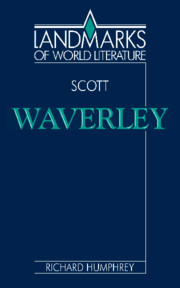2 - Waverley as story
Published online by Cambridge University Press: 27 January 2010
Summary
New journeys, new plot
The end of uncertainty is the death of interest; and hence it happens that no one now reads novels
The Heart of Midlothian, XIVThe central device, and one of the central metaphors, of Waverley is a journey undertaken shortly before the 1745 Uprising by young Edward Waverley – his head full of the romance journeys of yore – followed by a series of further journeys he undertakes both later that year and in 1746. As a metaphor, however, the journey is at least as old as the romance quest tradition in Edward's mind; and as a device it lends itself easily to lax, sequential structure. If, therefore, as the reviewer in the Scots Magazine of July 1814 saw, ‘The thread which holds the story together is formed by the adventures of a young man, whom family connections and a romantic spirit lead to explore these almost unknown regions’, it is worth asking how taut a thread it here is and whether it is made up of any new strands.
The question as to the quality of Scott's plotting has divided critics from the first. In the Edinburgh Review of November 1814, Jeffrey wrote that Waverley was ‘not very skilfully adjusted’, whereas the Monthly Review of that same month praised ‘a chain of circumstances which are very ingeniously and naturally combined by the author’.
- Type
- Chapter
- Information
- Scott: Waverley , pp. 36 - 73Publisher: Cambridge University PressPrint publication year: 1993

